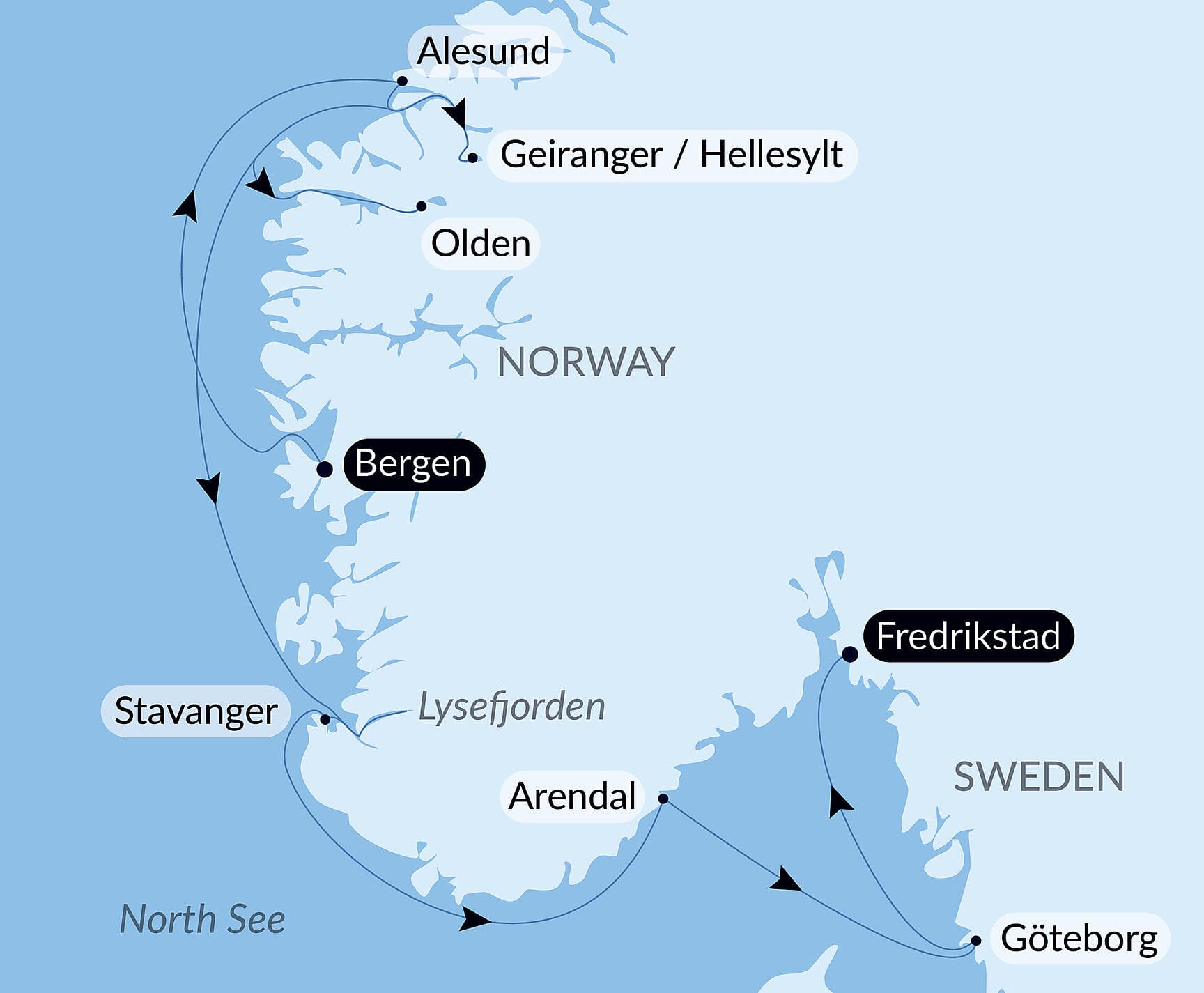The Norwegian fjords
Discover the destination
Why Norwegian fjords?
12 cruises in Norwegian fjords
From
Tromso (Norway)
To
Tromso (Norway)
10 nightsaboard the shipLe Lapérouse
Next departure
From
12,800 € /person*


Music of the Northern Shores
From
Tromso (Norway)
To
Glasgow, Scotland (United Kingdom)
10 nightsaboard the shipLe Lapérouse
Next departure
Offer(s)
Back-to-back offer -20%, Back to back offer, No single supplement, Christmas offer 2025, PONANT Bonus 25%
From
10,200 € /person*
From
Glasgow, Scotland (United Kingdom)
To
Longyearbyen, Spitsbergen (Norway)
13 nightsaboard the shipLe Lyrial
Next departure
From
Bergen (Norway)
To
Glasgow, Scotland (United Kingdom)
7 nightsaboard the shipLe Lapérouse
Next departure
From
5,750 € /person*
From
Narvik (Norway)
To
Bergen (Norway)
13 nightsaboard the shipLe Commandant Charcot
Next departure
From
Brest (France)
To
Tromso (Norway)
11 nightsaboard the shipLe Champlain
Next departure
From
Tromso (Norway)
To
Glasgow, Scotland (United Kingdom)
10 nightsaboard the shipLe Champlain
Next departure
Offer(s)
Back-to-back offer -20%, Back to back offer, No single supplement, PONANT Bonus 30%
From
7,640 € /person*


Cruising the Norwegian Fjords – with Smithsonian Journeys
From
Bergen (Norway)
To
Fredrikstad (Norway)
7 nightsaboard the shipLe Lapérouse
Next departure
From
Fredrikstad (Norway)
To
Bergen (Norway)
7 nightsaboard the shipLe Lapérouse
Next departures
From
Copenhagen (Denmark)
To
Bergen (Norway)
10 nightsaboard the shipLe Champlain
Next departure


Norwegian fjords
From
Bergen (Norway)
To
Fredrikstad (Norway)
7 nightsaboard the shipLe Champlain
Next departures


Scottish Isles and Norwegian Fjords Voyage – with Smithsonian Journeys
From
Bergen (Norway)
To
Glasgow, Scotland (United Kingdom)
7 nightsaboard the shipLe Champlain
Next departure
Offer(s)
Back-to-back offer -20%, Back to back offer, No single supplement, PONANT Bonus 30%
From
5,540 € /person*
*Price is per person, based on double occupancy, based on availability, and subject to change at any time. The category of stateroom to which this price applies may no longer be available.
See all cruises in Northern Europe
Explore

More inspiration
Upcoming departures, new experiences, interviews, exploration or scouting stories... All brochures can be ordered or downloaded in digital format.
















